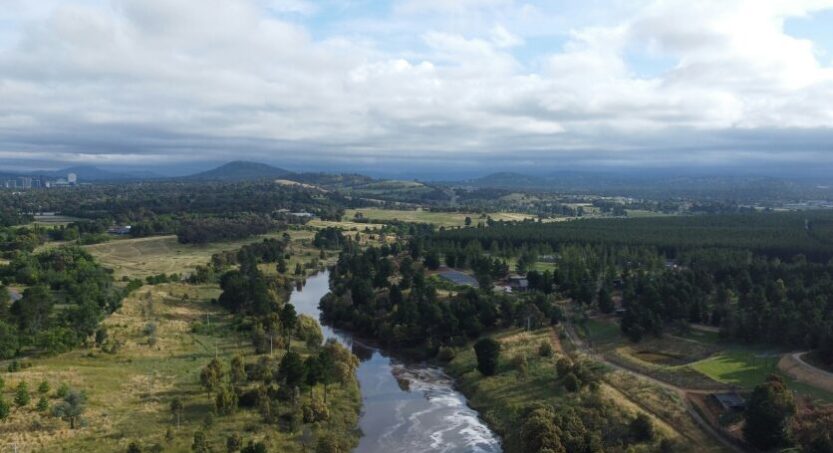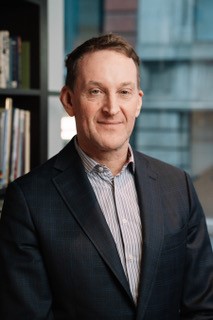Deep thinking and a daring step into public policy: the Watertrust story

Watertrust Australia is an independent NFP that seeks to find common ground among users, First Nation groups, environmentalists, river communities and others on water and catchment policy – in the driest inhabited continent in the world. Here, we tell the story of its inception and establishment in 2021, funded by a coalition of 16 philanthropic partners. It’s a prime example of the recent boost to environmental funding referenced in AEGN’s new report.
This story was first published in the hardcopy edition of Inspiring Stories of Giving volume 1 in October 2023.
In 2017, The Myer Foundation’s CEO, Leonard Vary, and his then-equivalent at The Ian Potter Foundation, Craig Connelly, got talking about Australian water.

“We started to think deeply about the security and sustainability of our water and catchments,” Leonard said. “Whether there was a role for philanthropy in that space, and if there was, what form that philanthropic intervention ought to take.”
The result is Watertrust Australia Ltd, an independent not-for-profit of rapidly growing significance that seeks to build trust and find common ground on water and catchment policy among users, First Nations groups, environmentalists, river communities and others. Funded by the pooled resources of a coalition of 16 philanthropic partners, for an initial 10-year period, former CEO Nick Austin said at the time of publication that the Watertrust was able to bring parties with very different agendas into the same room and to offer data synthesis that was not agenda-driven or selective. “It’s not an attempt to say, OK, we’ve got the smartest people in the room, so we’ve got the answer,” he said. “It’s using the process of bringing that knowledge together to bring the different stakeholders’ views together as well. So, it’s a co-design process.

“In my first year, we had more than 300 individual stakeholder meetings and what was really clear was that the concept resonated across the different interests, and we were welcomed into conversations,” Nick said. “We were pushing on open doors.”
In deciding to join the politically charged and complex world of water policy, Leonard and Craig asked themselves if philanthropy had “a competitive advantage” to all the other interested parties already involved. They hired a team of experienced consultants, led by Rod Marsh – now Watertrust’s Director, Strategy and Programs – and supported by some of Australia’s most knowledgeable water experts. The team recommended a model for which there was no precedent, told them it would take several times the amount of money they had originally budgeted, and that they would need to invest for a decade, minimum.
“There are no quick wins in water policy,” Nick said. “Often, we’re seeking to understand the values and priorities of each of the stakeholders and where they intersect. We’ll never find a magic bullet in water policy. It sounds pretty uninspiring, but in some ways it’s the least-worst option. We are looking for the option where stakeholders can accept that they don’t get everything they want, but it’s valid and they can live with that. Then we start to get something that approaches an enduring water policy outcome.”
Leonard said the founding philanthropic partners understood that Watertrust was a risk-capital venture but also that the concept could never work unless it was transparently independent, something only philanthropic funding could provide. “In my judgment, the competitive advantage of philanthropy is its capacity to engage in public policy discourse, without a dog in the fight,” he said.
“I will keep coming back to this, the independent role of philanthropy. There are times, of course, when philanthropy doesn’t act independently and comes down on one side, such as the Yes vote, or marriage equality, but there are instances in which philanthropy takes a deliberately disinterested approach to an important public policy issue by establishing the independent funding and governance structures needed to create an organisation such as Watertrust.”
It seems daring, stepping so strongly into a policy space that federal and state governments should logically inhabit, and Nick Austin agreed it was crucial that Watertrust never lost sight of its role. “The worst thing we can do is substitute for what governments should do. But if we can enable government by reducing bottlenecks and deadlocks, then that’s the role, and it’s a fine line between the two, becoming a substitute – versus assisting entities to deliver on their mandate.
“We constantly hear frustrations from stakeholders about the way governments consult. And governments see risk in consulting stakeholders. We absorb some of that risk by demonstrating different ways to engage stakeholders that deepen trust and legitimacy. However, we need to be really conscious that governments must also be actively supportive of and participating in that process.”
Leonard said The Myer Foundation remained committed for the long haul. “One of the challenges around long-term planning in relation to Australia’s water and catchments is the devotion of substantial resources to infrastructure, over the long-term. Changes in government, different vested groups having the ear of government, encouraging government to act inconsistently and differently over time, makes planning here very complicated and vexed.
“We know that Australia is the driest inhabited continent on Earth. We know that fresh water is often scarce and is always a precious resource. We know that the planet is getting hotter. We know that our population is increasing. All of those factors coalesce in a way that requires us to maximise the prospects of creating enduring, best-available policy in this sector. There is enough capacity within the philanthropic sector to see the criticality of taking a risk here, given the prospective benefit associated with materially improved policy outcomes.”